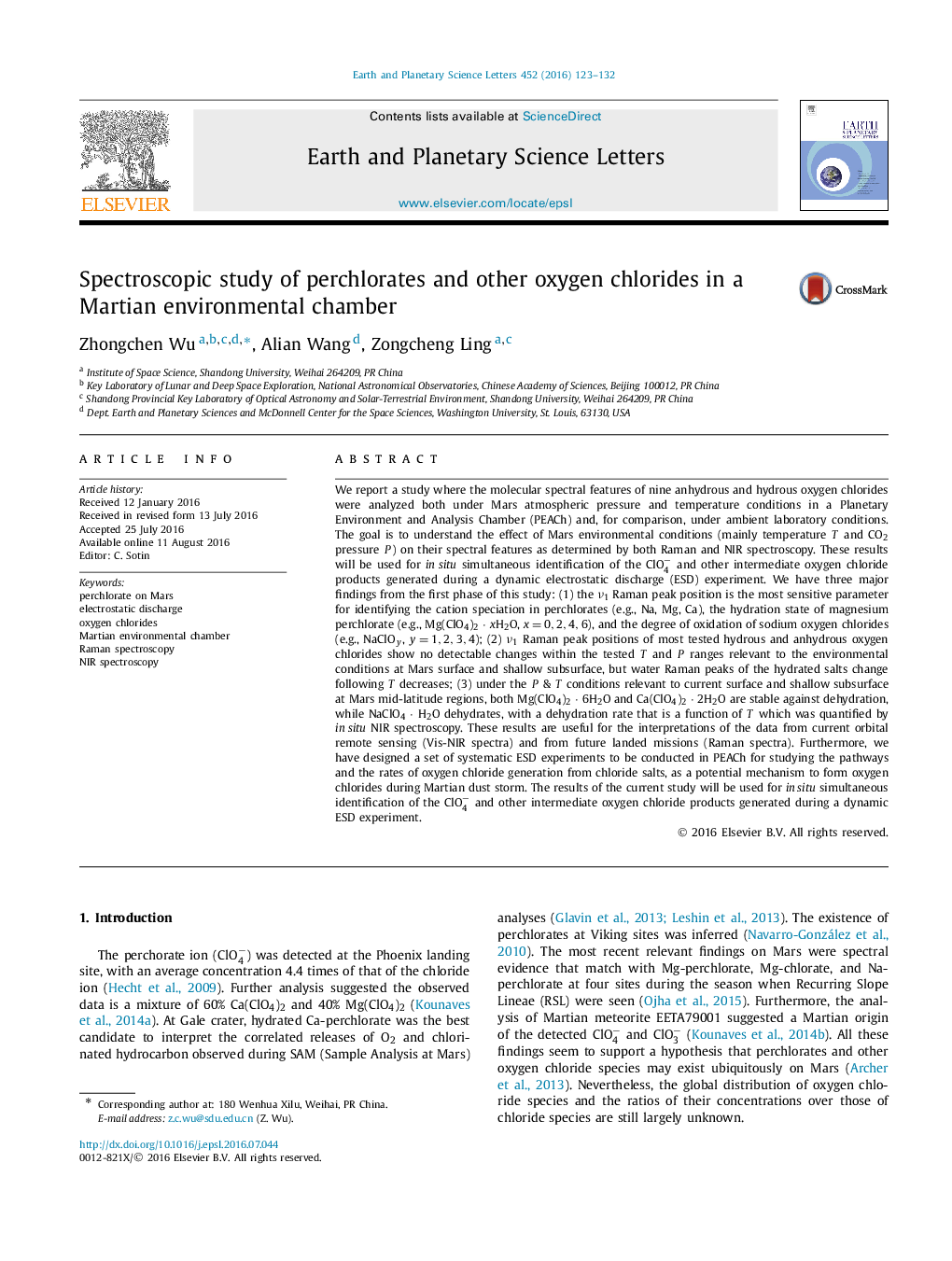| Article ID | Journal | Published Year | Pages | File Type |
|---|---|---|---|---|
| 6427104 | Earth and Planetary Science Letters | 2016 | 10 Pages |
â¢Nine oxygen chlorides were analyzed using Raman and NIR in a Martian chamber.â¢Raman ν1 peak is the best for the identification of oxygen chloride species in mixtures.â¢The Raman water peaks of hydrous perchlorates downshift when temperature decreases.â¢The rate of NaClO4 â H2O dehydration was quantified by in-situ NIR spectroscopy.
We report a study where the molecular spectral features of nine anhydrous and hydrous oxygen chlorides were analyzed both under Mars atmospheric pressure and temperature conditions in a Planetary Environment and Analysis Chamber (PEACh) and, for comparison, under ambient laboratory conditions. The goal is to understand the effect of Mars environmental conditions (mainly temperature T and CO2 pressure P) on their spectral features as determined by both Raman and NIR spectroscopy. These results will be used for in situ simultaneous identification of the ClO4â and other intermediate oxygen chloride products generated during a dynamic electrostatic discharge (ESD) experiment. We have three major findings from the first phase of this study: (1) the ν1 Raman peak position is the most sensitive parameter for identifying the cation speciation in perchlorates (e.g., Na, Mg, Ca), the hydration state of magnesium perchlorate (e.g., Mg(ClO4)2 â xH2O, x=0,2,4,6), and the degree of oxidation of sodium oxygen chlorides (e.g., NaClOy, y=1,2,3,4); (2) ν1 Raman peak positions of most tested hydrous and anhydrous oxygen chlorides show no detectable changes within the tested T and P ranges relevant to the environmental conditions at Mars surface and shallow subsurface, but water Raman peaks of the hydrated salts change following T decreases; (3) under the P & T conditions relevant to current surface and shallow subsurface at Mars mid-latitude regions, both Mg(ClO4)2 â 6H2O and Ca(ClO4)2 â 2H2O are stable against dehydration, while NaClO4 â H2O dehydrates, with a dehydration rate that is a function of T which was quantified by in situ NIR spectroscopy. These results are useful for the interpretations of the data from current orbital remote sensing (Vis-NIR spectra) and from future landed missions (Raman spectra). Furthermore, we have designed a set of systematic ESD experiments to be conducted in PEACh for studying the pathways and the rates of oxygen chloride generation from chloride salts, as a potential mechanism to form oxygen chlorides during Martian dust storm. The results of the current study will be used for in situ simultaneous identification of the ClO4â and other intermediate oxygen chloride products generated during a dynamic ESD experiment.
